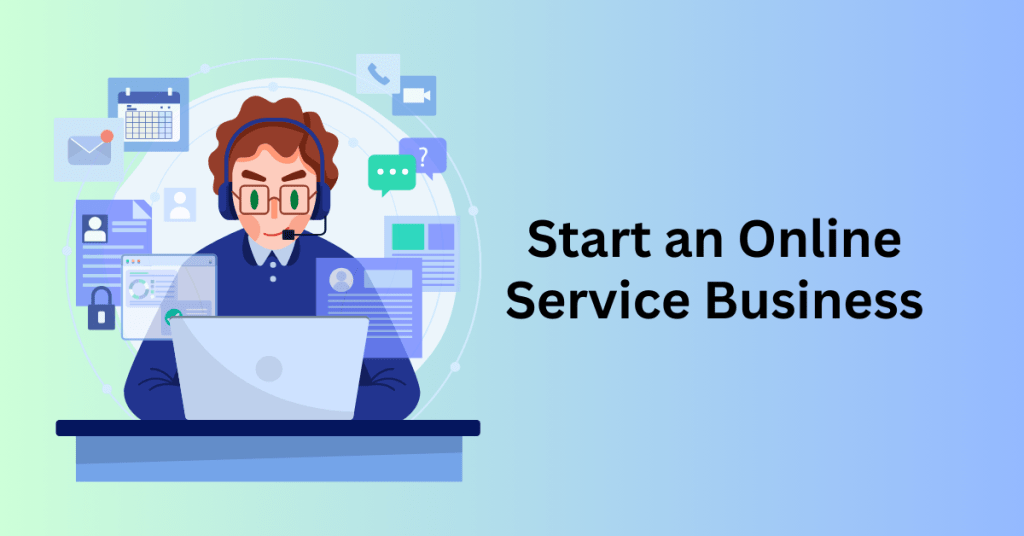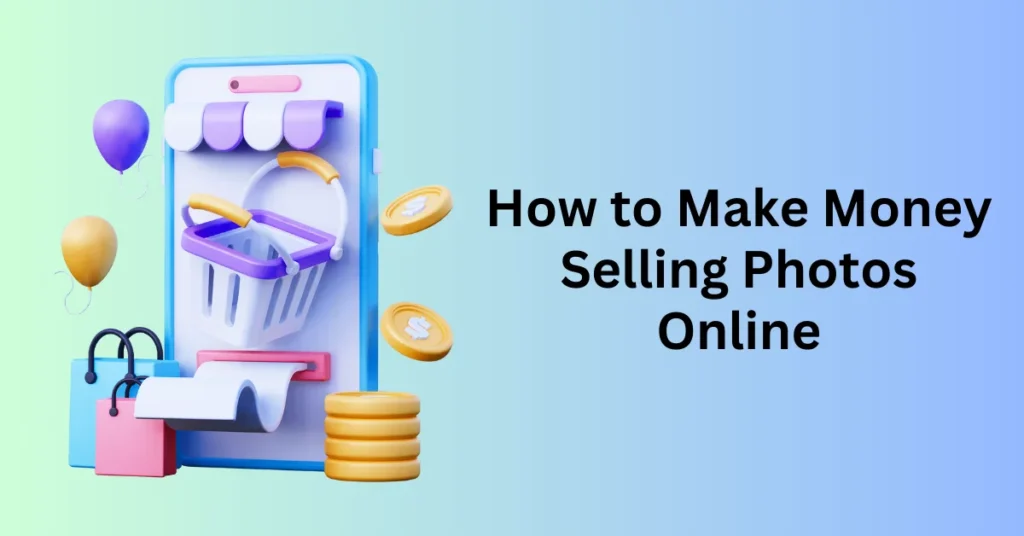With the growing unpredictability of the economy, having a side hustle has become essential. It provides a safety net if you unexpectedly lose your job, giving you financial security in uncertain times. In addition, an extra source of income can help you save for emergencies, pay down your mortgage, and set aside money for retirement—all without sacrificing your current way of life. There are many different side hustle that you can consider.
Today, we’ll explore three online money-making opportunities that require minimal startup costs. Keep your full-time job, dedicate some spare time to your side hustle, and watch your financial situation improve over time!
Before we start, let’s have a look a few myths of starting a side hustle.
Side Hustle Myth 1: Overnight Wealth
There’s a lot of misleading information floating around about how quickly people can make money online. Influencers often paint a picture of rapid wealth and luxury, but in reality, these portrayals are often exaggerated or fabricated. When you see someone showcasing a lavish lifestyle on Instagram, it’s easy to be impressed. Especially if they’re in their 20s. But it’s safe to assume they haven’t amassed that fortune in just a few years.
Sure, there are stories of people who seem to make it big overnight. But behind those success stories are years of hard work and persistence. Often, they’ve spent years honing their skills and building their businesses. This happens long before the world ever notices. For example, if someone started their entrepreneurial journey as a teenager, they likely spent years learning and experimenting. They’ve probably been grinding for over a decade before achieving recognition. While hard work is essential, luck also plays a role in entrepreneurial success. The more risks you take and opportunities you pursue, the higher your chances of striking gold.
Side Hustle Myth 2: It’s Easy to Start and Success
If you’re thinking about starting a side hustle while working full-time, be prepared to make significant time sacrifices. To build something meaningful, you’ll need to dedicate at least 20 hours a week to your side project. This might sound manageable, but when combined with a full-time job, your total workweek will be around 60 hours.
There are only 168 hours in a week. If you sleep 8 hours a night, that leaves you with 112 waking hours. After accounting for work, your commute, meals, chores, and other responsibilities, your 60-hour workweek doesn’t leave much room for relaxation or hobbies. Time for spending with family may also take a hit. In fact, you might struggle to balance your job and side hustle. As you work to grow your business, leisure and self-care could become scarce.
Side Hustle Myth 3: Overnight Success
Even for those who are realistic and avoid the “get rich quick” mentality, it’s easy to underestimate how long it takes to build a profitable side hustle. It’s not just about getting good at what you do. You’ll also need to master skills like marketing, copywriting, and sales.
For most people, it will take years to reach the point where their side hustle generates consistent income—let alone a profitable one. If you’re new to entrepreneurship and lack experience, there’s even more learning ahead. You’ll likely make mistakes along the way.
Don’t be surprised if it takes a while before you can earn even the equivalent of minimum wage. Building a business from scratch requires patience, persistence, and a willingness to embrace the long road ahead.
Are You Ready to Start a Side Hustle?

Before diving into any side hustle, ask yourself this important question: Can you commit to working at least 20 hours a week on this venture for the next several years while balancing your full-time job? If you’re unsure, it might not be the right path for you. Without this level of dedication, you’re likely to lose motivation and give up before seeing real results. That means you’ll never experience the rewards of your efforts.
The reality is, even if you put in all the right work and follow the best strategies, there’s still a chance you could fail. But here’s the key: if you’re prepared to stick it out, make the necessary sacrifices, and push through the inevitable challenges and setbacks, you’ll be in the best possible position to succeed.
Success isn’t guaranteed, but persistence over time greatly increases your odds. So, ask yourself: Are you ready to endure the hard work, the setbacks, and the challenges long enough to finally reap the rewards?
Side Hustle Idea 1: Start an Online Service Business
One of the most accessible ways to make money online is by offering a service that can be delivered remotely. With the growing demand for digital solutions, there’s a wide range of services you can provide to clients across the globe.
Service Business Ideas to Consider:
- Writing: Whether it’s content, email campaigns, landing page copy, social media posts, or even ghostwriting books and eBooks, there’s always a need for skilled writers.
- Video Editing: Social media platforms like YouTube, TikTok, Instagram, and Facebook are filled with creators who need help editing their videos for a polished look.
- Social Media Marketing: You can assist businesses by creating content calendars, producing and publishing content, engaging with their followers, running ad campaigns, and directing traffic to their sales funnels.
- Search Engine Optimization (SEO): Help clients improve their online visibility by doing keyword research, creating optimized content, building backlinks, and developing SEO strategies.
- Paid Advertising: Managing paid ad campaigns on platforms like Google, Facebook, Instagram, or even Amazon can be highly profitable if you know how to drive traffic effectively.
- Web Development: If you have coding skills, you can build and maintain websites and web apps for clients looking to establish their online presence.
The great thing about these services is that you can learn the necessary skills from a wealth of online resources. This makes it an ideal choice for anyone looking to start a service-based business.

Getting Your Foot in the Door: Start by Offering Free Work to Build Social Proof
When starting out, the hardest part is gaining clients without a track record to show for your work. Think about it: if you were hiring someone to provide a service, would you choose a person with no experience? Probably not. This creates a bit of a catch-22: you need clients to get experience, but you need experience to get clients.
The solution? Start by offering your services for free to someone who could benefit but might not be able to afford it, like a small YouTuber or a local business. Do the work for them and let them know they can use it at no cost. For example, if you’re a video editor, take one of their most popular videos, create short clips for social media, and offer them as a free value add.
Once you’ve done the work, kindly ask for a testimonial. If they’re happy with the results, they’ll likely be willing to share their feedback.
Focus on reaching out to smaller creators or businesses, as they’re more likely to respond. For instance, a YouTuber with under 1,000 subscribers is far more likely to read your email than a creator with millions of followers. By working with smaller clients first, you’ll gain the experience and social proof necessary to land bigger gigs in the future.
After 6-12 months of offering free services, you can begin to transition into paid work. By now, you should have a solid portfolio and testimonials that demonstrate your capabilities. Some of the clients you worked with for free may even choose to hire you for paid services as your reputation grows.
How to Land Paying Clients: Use Cold Email Outreach
Once you have some social proof, one of the most effective ways to land paying clients is through cold emailing. To get started, consider hiring a lead generation expert on platforms like Fiverr. They can help you compile a list of potential clients who fit your ideal customer profile.
For example, if you’re offering video editing services, you can have the expert find YouTubers within a specific subscriber range. Once you have the list, start sending out personalized cold emails to introduce yourself and offer your services.
To really dive into this strategy, we recommend reading The Cold Email Manifesto by Robert Indries and Alex Berman for more insights.
Freelancer vs. Agency: Which Path Is Right for You?
As a freelancer, it’s possible to earn up to $100,000 a year. However, if you’re aiming for even higher income, you might want to consider transitioning to an agency model.
If you love doing the work itself and don’t mind handling the business side just to keep things running, staying a freelancer might be the best choice. However, if you’re more interested in managing the business side and want to delegate the work to others, starting an agency could be a great way to scale. Keep in mind, though, that starting an agency means you’ll need to learn how to hire, train, and manage employees.
With an agency, you can reach mid-six-figure earnings. A successful agency can eventually be sold for a multiple of its annual net profit—usually 2 to 5 times its value. By offering a remote service and building your skills over time, you can create a sustainable, profitable business. Whether you stay solo or scale into an agency, the key is to remain consistent and focused as you grow.
Side Hustle Idea 2: Start a Dropshipping Business
Dropshipping is a popular e-commerce model where you don’t need to manage inventory. Instead, when customers place orders on your website, you forward those orders to your supplier, who then ships the products directly to the customer.

How Dropshipping Works:
- A customer places an order on your online store.
- You send the order details to your supplier.
- The supplier processes the order and ships the product to the customer.
This method allows you to run an e-commerce business without holding any stock yourself, reducing upfront costs.
Dropshipping: The Pros and Cons
While dropshipping might seem like a golden opportunity to make money online, it comes with its own set of challenges. Let’s break down the advantages and drawbacks.
Pros of Dropshipping:
- Low Startup Costs: You don’t need to invest in inventory upfront, which allows you to start an online business with minimal capital. This makes it a great way to learn about e-commerce without risking large sums of money.
- Scalable Business Model: Since you don’t handle the products directly, you can scale up your operations more easily. As you grow, you can focus on marketing and customer acquisition while your supplier handles fulfillment.
Cons of Dropshipping:
- Highly Competitive: Because the barriers to entry are low, dropshipping attracts a lot of competitors. With countless other stores selling the same products, standing out becomes a major challenge.
- Thin Profit Margins: Since you’re competing on price with other dropshippers, your profit margins can be razor-thin—often less than 10%. This makes it difficult to generate substantial profits unless you can scale up significantly.
- Lack of Control Over Supply Chain: Since you rely on suppliers to fulfill orders, you have limited control over product quality, shipping times, and inventory. If anything goes wrong, your customers will hold you responsible, which can damage your brand’s reputation.
Is Dropshipping “Dead”?
Despite claims that dropshipping is a thing of the past, it remains one of the most popular e-commerce fulfillment methods. In fact, the e-commerce industry as a whole is growing steadily, and dropshipping continues to be an effective way for entrepreneurs to start their businesses. However, success with dropshipping requires more than just selling products. You’ll need to build a legitimate, sustainable business, which takes time and effort.
How to Start a Dropshipping Business
Many dropshipping mentors suggest using product research tools to find trending items and selling them on your website. However, we recommend a more strategic approach:
- Choose a Niche You’re Passionate About: Focus on a niche that you’re genuinely interested in and can see yourself working with for years. Ideally, it should be a niche you’re familiar with to give you a competitive edge.
- Create Your Online Store: Build your e-commerce site using platforms like ClickFunnels or Shopify combined with Zendrop to make setting up your store easy.
- Optimize Your Sales Funnel: Instead of just selling one product, create a cart funnel around your flagship product. To boost your average order value (AOV), add a digital cross-sell, such as an eBook or an accessory related to the product. This will increase both your profits and your customer lifetime value (CLV).
- Launch Paid Advertising Campaigns: Create targeted ad campaigns to drive traffic to your sales funnel. Focus on the product that’s most likely to sell, and use A/B testing to optimize your campaigns for higher conversions.
Example: If you’re an outdoor enthusiast, consider launching a store that sells outdoor gear. Create a funnel for a hiking backpack, and offer add-ons like a hiking essentials bundle or an eBook guide for beginners.
Building a Sustainable E-commerce Business
To turn dropshipping into a long-term, sustainable business, follow this roadmap:
- Start with Dropshipping: Use dropshipping to get your store up and running quickly, without large upfront investment. Focus on building a sales funnel and driving traffic to your products.
- Transition to White Labeling: Once you’ve built some traction, shift from dropshipping to white-labelling. This means you source generic products, put your own brand on them, and fulfill orders through a third-party logistics (3PL) service.
- Move to Private Labeling: Once you’ve gained enough experience, you can move to private labelling, where you design and manufacture your own products instead of selling generic ones. This provides more control over your products and margins.
Creating a Trusted E-commerce Brand
Your ultimate goal should be to build a recognizable and trusted brand. This will help you stand out in a crowded market and create customer loyalty. Here are a few strategies to consider:
- Social Media Marketing: Use platforms like Instagram, Facebook, and TikTok to build brand awareness and connect with your audience.
- Video Marketing: Create videos that showcase your products in action, customer testimonials, or educational content related to your niche.
- Email Marketing: Build an email list and send regular newsletters to provide value, promote your products, and engage with your customers.
One of the best ways to create brand recognition is to launch a weekly niche newsletter that offers valuable content to your target audience. This positions you as an expert and builds trust over time.
As your business grows, excellent customer service and retention become essential. Dropshipping can make this challenging at first. However, transitioning to white-label and private-label products simplifies quality control and improves customer experiences.
Once you’ve built a strong brand and a sustainable business, you can choose to continue growing or sell your business for a profit. A well-established e-commerce brand with a recognizable name and loyal customer base can be sold for 2–5 times its annual net profit. This provides an exit strategy for entrepreneurs looking to cash out.
With the right strategy and persistence, dropshipping can become a profitable and scalable business model. It offers long-term success. Whether you’re just starting out or scaling up, focus on building a solid foundation and creating a trusted brand that customers love.
Side Hustle Idea 3: Build Software Products
Indie hacking refers to building and scaling software products independently, without external investment like venture capital. Instead of following the traditional Silicon Valley route, indie hackers avoid seeking funding and working long hours on an idea for a lucrative exit. Instead, they focus on creating profitable software businesses with high profit margins and minimal overhead.

The indie hacker approach often involves starting small, building software products in your free time, and scaling them organically. While most indie hackers won’t build a billion-dollar “unicorn” startup, many are making six-figure or even seven-figure incomes. For example, Pieter Levels, one of the most famous indie hackers, generates about $2.3M annually with a 90%+ profit margin.
Do You Need to Know How to Code?
While it’s possible to build software products without coding knowledge using no-code tools, it’s highly beneficial to learn the basics of web development. This includes learning HTML, CSS, and JavaScript. Taking online courses (e.g., on Udemy) can help you get started. However, be cautious of “tutorial hell.” It’s easy to spend more time consuming content than actually building your own projects.
Once you’ve completed a basic course, begin creating software products immediately. This hands-on approach will help solidify your learning and get you started on your indie hacking journey.
How to Find a Winning Product Idea
You don’t need to come up with a groundbreaking, innovative idea to succeed as an indie hacker. In fact, you’re more likely to succeed by improving on existing products that already have proven demand. Research popular B2B SaaS (Software as a Service) apps to find successful software ideas and then create a version of the product tailored to a specific niche.
For instance, Nathan Barry’s ConvertKit, an email marketing tool, succeeded not by competing directly with established players like Aweber or MailChimp, but by focusing on bloggers and content creators. Today, ConvertKit generates over $42 million in annual recurring revenue, showing how a targeted approach can be highly successful.
Build and Launch 100 Software Products
Indie hackers are known for their speed in product development, with many aiming to launch a product quickly—often in less than a month. They embrace the Lean Startup concept of a Minimum Viable Product (MVP), focusing on getting a simple version of the product to market as fast as possible.
This approach means continually shipping new products until one takes off. For example, Pieter Levels has built over 70 products in the last decade, Marc Louvion has launched 23, and Nico Jeannen has created 17 products in a single year. These prolific product launches increase the likelihood of finding product-market fit.
If you want to try this approach, aim to ship 100 products. While this may seem ambitious, shipping one product per month would take just under nine years. The key is to keep creating and testing new products until something works.
Indie hacking offers a unique opportunity to build a profitable software business with minimal investment. By focusing on niche markets and creating high-quality, targeted products, you can achieve success without needing outside funding. Whether you’re learning to code or using no-code tools, the key to success is building and launching frequently. The more products you create, the higher your chances of hitting on a winning idea. If one product takes off, it could provide the foundation for long-term success—allowing you to scale and potentially even sell the business for a significant return.
Final Thoughts: How to Make Extra Money with Side Hustle and Boost Your Income
The key to success with any side hustle is persistence and consistency. The journey may come with challenges. However, the rewards are well worth the effort. Choose a side hustle that aligns with your skills and interests. This way, you can enjoy the flexibility of earning extra income without giving up your full-time job. Whether it’s freelancing, dropshipping, or building your own online business, the opportunities are endless. The digital age offers countless ways to make money.
The important thing is to take that first step and commit to putting in the work, even when things feel slow at first.
Remember, side hustles aren’t just about boosting your bank account. They’re about creating more financial freedom, building new skills, and opening doors to long-term opportunities. Whether you want to pay off debt, save for a big purchase, or start planning for retirement, a successful side hustle can help you achieve those goals faster.
So, stay motivated, adapt as you go, and let your side hustle be the stepping stone toward a more secure and prosperous future. With the right approach and mindset, you can turn your extra efforts into lasting success.


